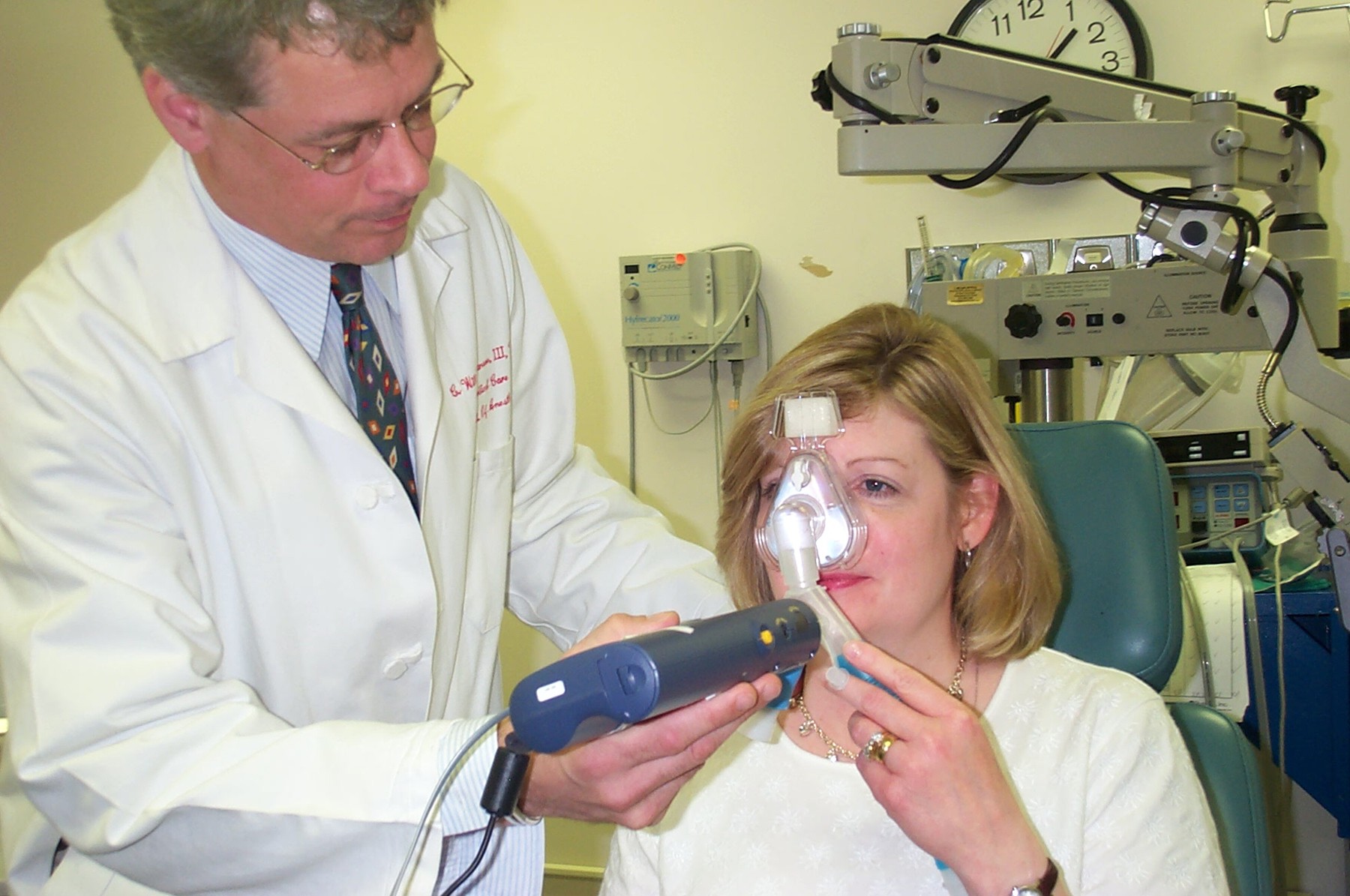This is how the gases is collected for the e-nose nowadays. (*)
E-nose to detect the lung cancer from the breath
By Engy Fouda
Master’s student’s ultimate goal is using the electronic nose (e-nose) to analyze the patient’s breath for early lung cancer detection. He is investigating the e-nose usage for different applications as pre-steps to reach his goal. He believes that the e-nose is the fastest detection method for lung cancer.
Mohamed Saad, master’s student in Computer Engineering Department, Cairo University, says, “Each person emits vapors, by collecting these gases and analyzing them, the person can then be classified as a healthy or a sick person.”
“The challenge to the cancer detection application is the expensive price of the e-nose systems that reaches $20 000,” he said. Thus, he decided to first invent a cheap e-nose sensor himself to not exceed $1000.
He is currently testing the e-nose that he designed, implemented to emulate the human nose and assembled it on a mobile robot. “It can have multiple applications like the navigating cancer, commercial server-robots and toxic gas robots, “he said.
He implemented the mobile server-robot that smells juices and fetches the correct one. He trained the robot to differentiate between the different juices odors, and the robot can, upon order, fetch the apple or the orange juice.
The application will be prolonged to detect the toxic gases. “As the e-nose detection is faster than the human nose, the gas leakage detection will be faster,” he said. The final stop will be using it for the lung cancer detection.
Saad’s graduation project in 2011 was a robot to navigate automatically to the locations that has toxic gases. If a toxic gas leaks in a house or a factory, the robot uses the e-nose to sniff the toxic gases, automatically moves to the peak point of the strongest gas leakage, and makes alarm.
The platform of Saad’s server-robot system starts by collecting the gases then the learning phase, where the robotic e-nose learned to distinguish the target gases from any other gases. Then the pattern recognition algorithm that finds the target gas. He is now enhancing the system for better results to prove that the e-nose can emulate the human nose. He added, “The subtle idea relies on using a gas sensor, that can distinguish between the normal gas in the air and otherwise.”
The commercial applications of the e-nose are detecting the expired food, food quality, smoking, toxic gases, and identifying the drunk drivers.
To enhance the results, Saad is investigating using other sensors and other ways to collaborate with the smell to distinguish the juice correctly. He thought about using an e-tongue, he said, “It is simple as it is only a potentiometer and it produces nice results in the current researches. “ He is looking for alternative ideas, because in a server-robot, having your robot tasting everything that you are about to drink, is not a smart nor healthy idea!
“I chose the e-nose applications because I wish to benefit the people’s lives in the future,” Saad said.
(*) The photo: http://www.uphs.upenn.edu/news/news_photos/2004/april/eNose.html
